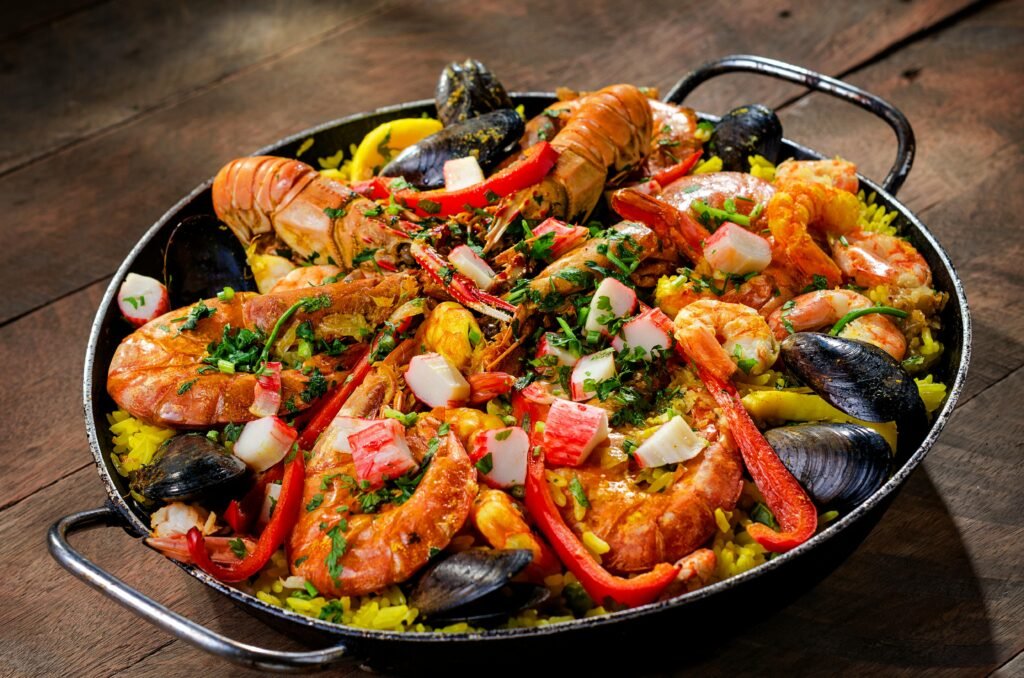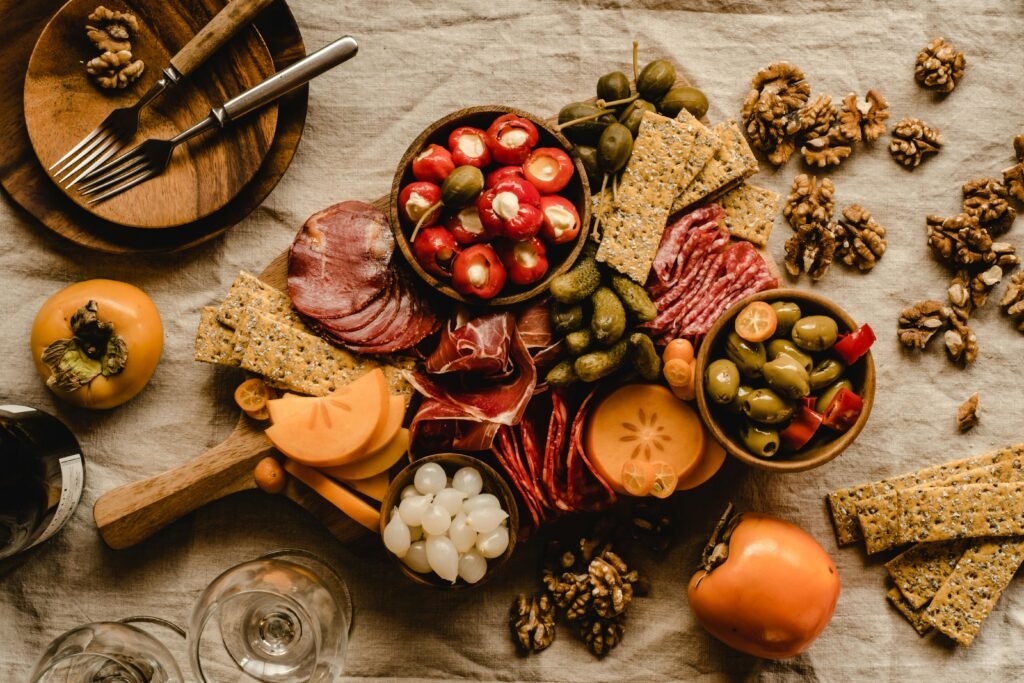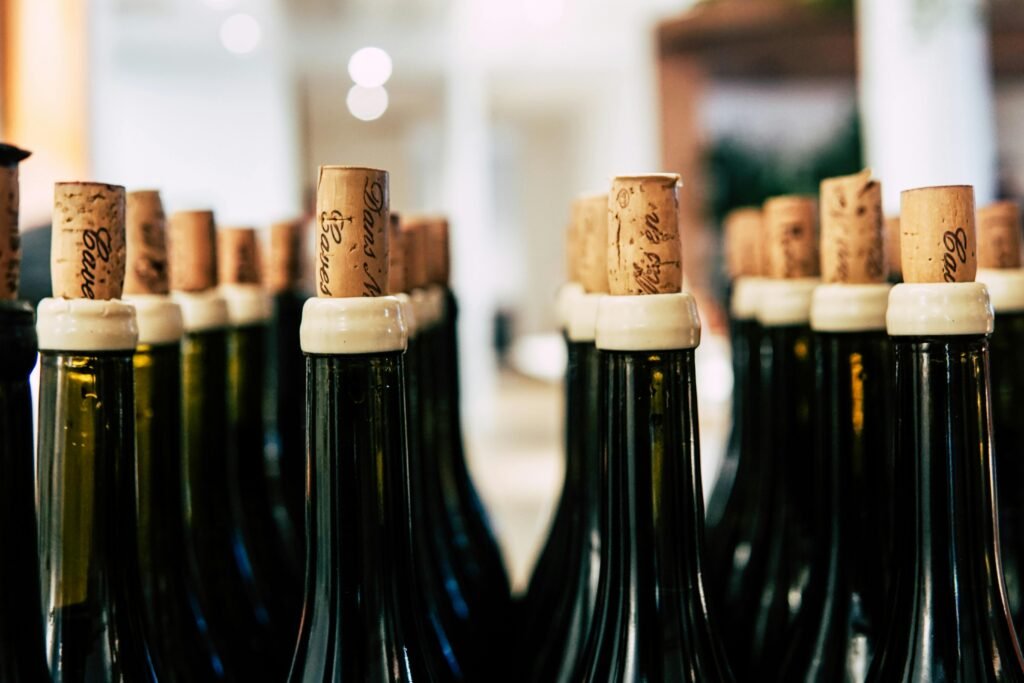Introduction to Spanish Cuisine
Spanish cuisine is a vibrant tapestry woven from a multitude of cultural influences, resulting in a rich and diverse culinary landscape. The country’s geography, climate, and history have all played significant roles in shaping its distinct flavors and cooking techniques. From the coastal regions to the mountainous inland areas, each part of Spain proudly showcases its own variations of traditional dishes, making its gastronomy not only diverse but also regionally specific.

The influence of various cultures has greatly contributed to Spain’s unique culinary identity. The Moorish presence in the Iberian Peninsula introduced an array of spices, fruits, and cooking methods that transformed local ingredients into flavorful, aromatic dishes. Staples such as saffron, citrus fruits, and nuts like almonds became integrated into Spanish recipes, enhancing their complexity and appeal. This historical interaction is particularly evident in dishes like paella, which is often enriched with a medley of seafood and land-based proteins, showcasing both the bounty of the sea and the richness of the countryside.
Roman influences, too, have left an indelible mark on Spanish cuisine. The Romans introduced agricultural practices and various ingredients that are now considered quintessential to Spanish cooking, such as olives and wine. This enhanced appreciation for agricultural produce laid the groundwork for the Mediterranean diet, which has garnered worldwide acclaim for its health benefits and culinary elegance.
Additionally, indigenous traditions play a crucial role in the development of Spanish dishes. The use of locally sourced ingredients, such as potatoes, tomatoes, and peppers, reflects a deep connection to the land and showcases the importance of seasonal produce. The interplay between these diverse cultural influences continues to shape Spanish cuisine today, inviting both locals and tourists alike to explore its rich flavors and culinary heritage.
The Origins of Paella
Paella, a dish that has become synonymous with Spanish cuisine, boasts a rich and multifaceted history that traces back to the picturesque region of Valencia. Initially, this saffron-infused rice dish was a humble meal cooked by farmers and laborers in the rice fields of Albufera, incorporating the day’s fresh ingredients. The very name “paella” is derived from the Latin word “patella,” meaning pan, which highlights the dish’s cooking method in a wide, shallow vessel.
Traditionally, paella was made with a combination of rice, fresh vegetables, rabbit, and occasionally snails. As Valencia’s cultural landscape evolved, so too did the ingredients, with seafood becoming predominant along the coast. Thus emerged the famous “Paella de Marisco,” which features an abundance of shellfish and fish, showcasing the region’s maritime bounty. Furthermore, the ever-popular “Paella Valenciana” distinguishes itself with the inclusion of chicken, duck, and seasonal vegetables, reflecting the agricultural roots of the region.
The dish holds significant cultural importance within Spanish society, often being prepared for special occasions and family gatherings. It has transcended its humble origins to become a symbol of culinary pride, not only in Valencia but throughout the entire country. Local anecdotes often tell of community gatherings centered around large platters of paella, where family and friends come together to share laughter and stories. Additionally, festivals celebrating this iconic dish, such as La Tomatina or various paella contests, further underscore its status as a national treasure.
In conclusion, paella is more than just a meal; it encapsulates the essence of Spanish culture, history, and the shared values of community and tradition. As one explores the diverse regions of Spain, experiencing the unique variations of paella offers an authentic taste of the nation’s enduring culinary legacy.

Exploring Tapas from Andalusia
Tapas, a quintessential aspect of Spanish cuisine, originated in Andalusia, a region known for its vibrant culture and culinary traditions. The concept of tapas is believed to date back to the 13th century, where the word ‘tapa’ literally means ‘lid’ or ‘cover.’ Traditionally, tapas were small portions of food served alongside drinks, often designed to cover the glass, preventing flies from contaminating the beverage. Over time, this simple practice evolved into a celebrated social dining experience that has become synonymous with Spanish culture.
The evolution of tapas into a form of communal dining reflects the essence of social interaction in Spain. Sharing plates of tapas fosters a spirit of togetherness, encouraging friends and family to gather and enjoy a leisurely meal. Tapas bars are prevalent throughout Andalusia, providing venues where patrons can experience a variety of flavors in one seating. Each dish represents a unique aspect of Andalusian cooking, often featuring local ingredients such as olives, seafood, and cured meats.
Some of the most popular tapas dishes include ‘patatas bravas,’ crispy potatoes served with a spicy tomato sauce, and ‘gambas al ajillo,’ garlic shrimp sautéed in olive oil. ‘Jamón ibérico,’ an exquisite cured ham, is another staple that showcases the region’s rich agricultural heritage. Other favorites include ‘albóndigas’ (meatballs), ‘pimientos de padrón’ (fried green peppers), and ‘tortilla española,’ a traditional Spanish omelet made from eggs and potatoes. Each dish not only tantalizes the taste buds but also tells the story of Andalusia’s culinary prowess.
Ultimately, tapas are more than just food; they embody the essence of social dining in Spain, celebrating the cultural heritage of Andalusia while inviting people to connect over shared plates. This communal experience enriches Spanish life, making tapas an essential element of gastronomic traditions throughout the country.

The Iconic Tortilla Española
The tortilla española, often referred to as Spanish omelette, is a cherished dish that embodies the heart of Spanish cuisine. Its simple yet flavorful composition primarily consists of eggs, potatoes, and onions, making it a beloved staple in households throughout Spain. The origins of this iconic dish can be traced back to the early 19th century, with various regions creating their unique interpretations. While some historians argue that its roots lie in the Spanish region of Navarra, others contend it emerged in the southern region of Andalusia. Regardless of its precise origins, the tortilla española has become a symbol of Spanish culture and hospitality.
To prepare a traditional tortilla española, the ingredients are crucial. High-quality potatoes, usually waxy varieties, are preferred, as they maintain a desirable texture during cooking. Sautéing the potatoes slowly in olive oil enhances their flavor profile, while eggs, beaten and mixed, bind the ingredients together. However, the inclusion of onions has always sparked debate. Some purists argue that the authentic tortilla should forego onions for a more classic taste, while others embrace the sweet addition, arguing it balances the dish’s richness.
Traditionally served as a tapa, the tortilla española can be enjoyed at any meal—be it breakfast, lunch, or dinner. Variations of this dish abound across Spain, with some notable examples incorporating ingredients such as chorizo, peppers, or even herbs. Regardless of the variations, each rendition upholds the spirit of the basic recipe, reflecting the regional diversity of Spanish gastronomy. As families gather to share this dish, the tortilla española not only satisfies culinary desires but also fosters a shared connection to their cultural heritage, making it an enduring favorite on Spanish tables.
Regional Variations in Spanish Cuisine
Spain is a country rich in culinary diversity, with each region presenting its own unique flavors, ingredients, and cooking techniques. This regional variation contributes significantly to the overall tapestry of Spanish cuisine, attracting food enthusiasts from around the world. The northern regions, particularly Galicia, are known for their seafood, thanks to the extensive coastline. Dishes such as pulpo a la gallega (Galician-style octopus) and empanada gallega showcase the use of fresh ingredients and simple preparation methods that enhance the natural flavors of the produce.
Moving eastward, the Basque Country stands out for its vibrant culinary scene, where traditional dishes are elevated through innovative techniques. Here, pintxos — small snacks typically enjoyed with drinks — offer a creative glimpse into local ingredients, combining flavors like idiazábal cheese, cured meats, and seasonal vegetables. The region emphasizes local produce and artisanal methods, making its cuisine distinctively sophisticated yet approachable.
In contrast, Catalonia boasts a rich assortment of dishes reflecting its Mediterranean influences. The famous pa amb tomàquet (bread with tomato) highlights simplicity, showcasing the region’s quality tomatoes and olive oil. Additionally, hearty stews like escalivada and calçots (green onions) are testament to Catalonia’s agricultural heritage, offering robust flavors that celebrate the land’s bounty.
As one travels further south to Andalusia, the cuisine transforms once again with its Moorish influences. Here, dishes such as gazpacho and salmorejo reflect a refreshing take on ingredients that thrive in the warm climate. The culinary traditions of Spain reveal how geography and history have shaped regional dishes, fostering a rich heritage that continues to evolve while honoring its roots.
Food Markets and Culinary Hotspots
Spain offers a vibrant tapestry of culinary experiences, deeply ingrained in its numerous food markets and culinary hotspots. These venues serve as a portal to authentic Spanish cuisine, allowing both locals and visitors to immerse themselves in the rich tapestry of flavors that define the nation. From bustling urban markets to quaint countryside spots, these locations highlight Spain’s dedication to fresh ingredients and time-honored cooking traditions.
One of the most renowned food markets is the Mercat de Sant Josep de la Boqueria in Barcelona. This iconic market is not only a feast for the eyes but also a gathering place for culinary enthusiasts eager to sample local produce, cured meats, and seafood. Visitors can wander through the aisles and discover an array of tapas bars offering small plates that encapsulate traditional Spanish dishes. Be sure to try the famous jamón ibérico and fresh seafood paella for an authentic taste of the region.
In Madrid, the Mercado de San Miguel is an essential stop for food lovers. This beautifully restored market showcases the diversity of Spanish gastronomy with a variety of stands serving everything from artisanal cheeses to gourmet olives. Participating in a culinary tour here can provide insights into the local food culture, offering opportunities to taste regional specialties like cocido madrileño or churros with chocolate.
The gastronomic scene is not limited to major cities. In regions such as Andalusia, markets like the Mercado de Triana in Seville present a more traditional atmosphere, where vendors sell local produce and artisanal products. The vibrant culinary hotspots throughout Spain are pivotal in preserving and promoting the country’s culinary heritage, making them essential destinations for anyone eager to explore the timeless flavors and innovative interpretations that Spanish cuisine has to offer.
Tips for Culinary Exploration in Spain
Exploring the rich tapestry of Spanish cuisine can be an exhilarating experience for any traveler. To ensure an authentic culinary journey, it is crucial to familiarize yourself with local dining practices and to seek out the hidden gems that showcase traditional flavors. The first step is selecting the right restaurants; opt for eateries frequented by locals, as they often serve the most authentic dishes. Small bistros and taverns, known as ‘tabernas’, typically offer a more genuine taste of regional specialties compared to larger tourist-oriented establishments.
When dining in Spain, it is essential to understand local dining etiquette. Meal times differ dramatically from those in many other countries, with lunch commonly served between 1:00 PM and 3:00 PM and dinner often starting around 9:00 PM. Additionally, tapear, or sharing small plates, is a cherished practice in Spanish dining. Engage with your dining companions by sampling a variety of dishes, which will offer a broader appreciation of Spain’s diverse culinary heritage. If you are at a tapas bar, do not hesitate to ask the staff for recommendations; their insights can lead you to the most flavorful choices.
Furthermore, for those looking to deepen their culinary knowledge, considering local cookbooks can be a rewarding endeavor. Many writers focus on regional specialties, and introducing these recipes into your own kitchen can provide a tangible connection to Spanish culture. Alternatively, enrolling in a culinary class can provide hands-on experience at mastering traditional techniques. Many cities such as Barcelona, Seville, and Madrid offer various workshops where you can learn how to create iconic dishes like paella or gazpacho. Participating in such activities will not only enhance your skills but will also allow you to engage with local chefs who can share invaluable insights into the art of Spanish cooking.
Pairing Spanish Dishes with Local Wines
The culinary landscape of Spain is as rich and diverse as its history, and understanding how to pair traditional Spanish dishes with local wines can elevate the dining experience. Each region boasts unique flavors, which can harmonize exquisitely with specific wine varietals. Notably, two of Spain’s most esteemed wine regions are Rioja and Ribera del Duero, known for their outstanding red wines.

When considering the pairing of paella, a classic dish originating from Valencia, one might reach for a local white wine such as a Valencian Albarino or a broader option like a dry rosé. These wines have bright acidity and floral notes that complement the saffron-infused rice and seafood in paella, balancing the dish’s rich flavors without overpowering them.
For the quintessential Spanish tortilla española, a dish made with potatoes and eggs, a Spanish red wine from Rioja can be an ideal match. The fruit-forward, yet subtle tannins of a Rioja wine can enhance the earthiness of the potatoes while harmonizing with the richness of the eggs. Look for a joven or crianza Rioja for a refreshing experience that accentuates the dish’s comforting qualities.
Ribera del Duero, another prestigious Spanish wine region, is renowned for its robust red wines made primarily from the Tempranillo grape. This intense, full-bodied wine pairs beautifully with hearty meats and stews, making it a perfect companion for dishes like cochinillo asado (roast suckling pig) or cordero al horno (oven-roasted lamb). The complexity of Ribera del Duero wines can stand up to the rich flavors and textures of these traditional dishes.
Ultimately, the art of pairing Spanish dishes with local wines lies in choosing wines that either contrast or complement the flavors of the food, creating a balanced and enjoyable dining experience. This exploration not only enhances the appreciation of España’s culinary offerings but also deepens the connection to its viticultural heritage.
Conclusion: A Journey Through Flavor
As we conclude our exploration of traditional Spanish dishes, it becomes clear that Spanish cuisine offers not only a feast for the palate but also a rich tapestry of cultural significance and history. Each dish serves as a gateway into the heart of Spain, allowing one to appreciate its diverse regions, vibrant flavors, and the cultural narratives that shape the culinary practices of its people. From the comforting embrace of paella to the simplicity of a well-cooked tortilla española, the flavors of Spain resonate on multiple levels.
Spanish cuisine is deeply intertwined with its regional identities, showcasing ingredients and techniques that are unique to each area. For instance, the seafood of Galicia, the spices of Andalusia, and the agricultural bounty of the interior all contribute to a culinary map as diverse as the nation itself. Enjoying traditional dishes like tapas not only highlights the joy of sharing meals but also emphasizes the importance of social interactions around the dining table. Each bite connects one to the history and traditions that have been passed down through generations.
Your culinary journey through Spain can be an enriching experience, urging you to savor the tastes and textures that make Spanish food truly special. As you prepare to embark on your own gastronomic adventure, consider exploring local markets, engaging with passionate chefs, and, most importantly, sharing meals with friends and family. In doing so, you will find that the flavors of Spain have an unparalleled ability to bring people together, fostering understanding and appreciation for a culture that is as diverse as its cuisine.



